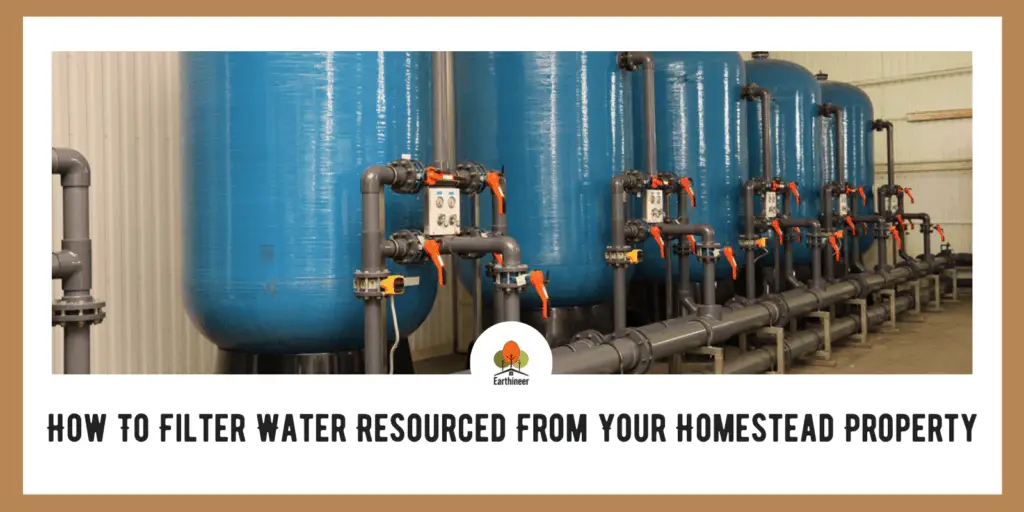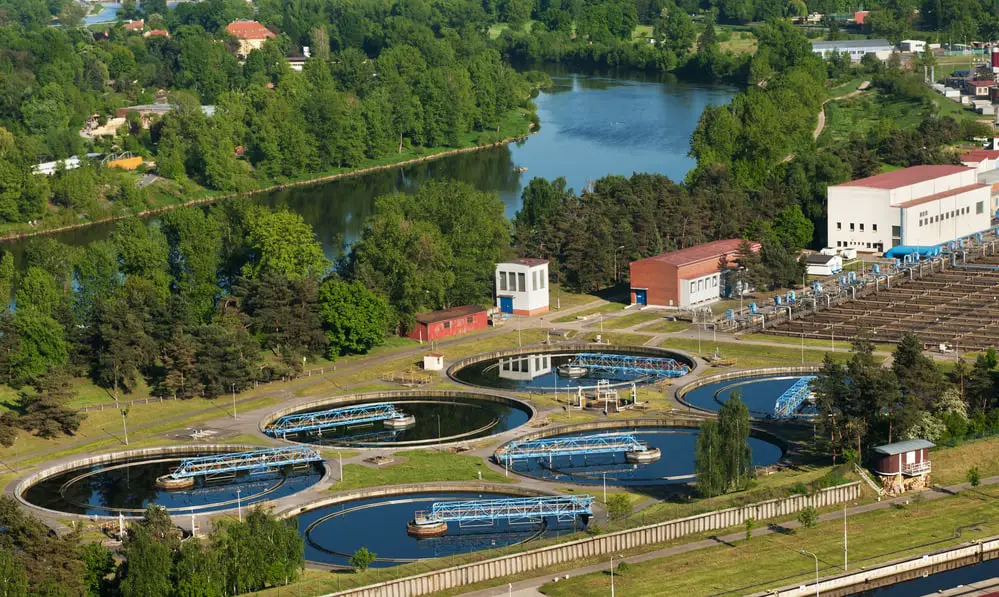Water is one of the most vital elements of life, no matter where you live. Living on a homestead provides you with limited drinking water options.
Homesteaders mostly rely on rainwater or surface water commonly found in rivers, lakes, springs, and waterfalls to live on and to brew coffee with! They also use pumps and deep wells.
Different water purification methods have been used to make sure that a water source is clean enough to drink. It can be mind-boggling as to which of these methods are best, though.
This is why we’ve created a guide that explains the most common ways to filter water, including both old-school and new-school methods.
Best Ways To Filter Water
Filtering and Disinfectants
Filtering and disinfectants are two basic ways of purification. Contaminants and particles can be removed through filters.
Disinfectants are used to kill biological hazards as they destroy bacteria and harmful microorganisms present in water. Some methods have dual benefits, though.
The choice of water purification is directly linked to the availability of water resources.
Rain and spring water are considerably clean, so major filtering isn’t required, but they require a disinfectant pass to avoid illness caused by contamination.
However, surface water like streams, rivers, or shallow wells may contain other impurities and require filtering.
Lightly filtering spring water is fine in most cases, but lightly filtering stream water from a dirty pond isn’t the best thing to do or the safest.
Filtration
This method can be done by pouring water through a folded tissue (membrane filters
) or in a bit of an intricate manner by propelling water through a carbon or ceramic filter (depth filters).
Membrane filters are best to use before any other purification method if the water has debris, mud, or a cloudy appearance.
Berkey unit and Bio-sand filters are excellent passive filters as they remove sediments, off-tastes, and pathogens.
Biofilters (sand filters) are homemade Brita-style filters that homesteaders can easily use and make using economical and readily available materials.
This is undoubtedly a great option and is relatively easy to learn how to do.
Ceramic Water Filters
In this process, simple clay pottery is used for filtration. This method relies on microscopic pores that are present in clay to facilitate filtration.
These pores are so small in size that microorganisms get stuck in them and can’t pass through them, remaining stuck on the dirty side of the filter.
The best thing about these DIY ceramic filter systems is that they are super easy to use and made at home.
Still, the easier way is to buy commonly available ceramic candle replacement filters and install them in your system.
Charcoal and Activated Carbon
Charcoal can be made in homestead property from waste wood. It should be from a clean source to be used for purification purposes.
Charcoal is highly reactive, and it burns well as carbon is the primary element of its composition.
The natural structure of wood gives charcoal a large surface area that helps it react well with water. Activated carbon, also known as activated charcoal, works through adsorption.
It binds impurities to the filter rather than absorbing them.
It is the ideal water filter as it removes toxins from water without removing salts and essential minerals, which can’t be said about some other water filtering methods.
Bleach
Treating water with bleach is simple yet the best way to purify water. This is not the tastiest way, but it is quick and easy.
The efficacy of this method depends on several factors, including temperature, pH, and clarity of the water.
Additionally, it works better if you use it before you put water through an activated carbon filter.
The biggest downside to this method, besides the taste, is that it requires external inputs in the form of bleach.
This should exclusively be employed as a last resort method and only at a professional’s discretion.
Distillation
Distillation evaporates water to create steam and removes residual particles as well as kills bacteria and microorganisms. It removes all impurities, making it a very effective technique.
You can use the stove or evaporate the water over the fire. If done on a large scale, this method could be intensive to boil gallons of water.
However, this might be a viable method when producing small quantities of distilled water. To make distilled water the central portion of your water, the best option is still solar water.
It consists of a pool of water under a piece of glass or plastic sheet.
Solar UV Water Purification
This option of purifying water is straightforward and easy. All you have to do is to expose your water to direct sunlight for several hours at a time.
This can be done in any open space, like a pan or in a bucket.
UV rays are blocked easily by glass and plastics, which means if we use any clear container, it will block the sterilizing power of the sun.
For the solar UV purification method to work best, the water should be uncovered and directly exposed to sunlight for several hours.
Solar UV purification is by far one of the best, if not the best, method of sterilizing water.
Frequently Asked Questions
How Can I Filter Water Without Electricity?
Reliable methods include charcoal/bio-filters, ceramic filters, solar UV purification, chemical disinfectant (bleach), solar distillation, or boiling.
These methods are either gravity fed or can operate without electricity and can be easily done at any homestead property.
What is The Best Way To Treat Water?
From using filtration methods to using chemical agents or utilizing natural sunlight, all methods are equally credible.
Some of the methods may not be the best in some climates, though. Trying to use the solar option in Alaska during the dead of winter will result in the water transforming into ice.
What’s The Cost of Water Filtration?
On the other hand, if you set up a proper water purification plant-like solar UV, it has an initial cost of solar plates and an installation fee.
So if you are low on a budget, go for the method which is not heavy on the wallet, nor is it challenging to have set up.
Verdict
Living off the grid on a homestead comes with many challenges, including the availability of clean water. Whatever the water source is, make sure it is pure before you consume it.
If the water quality is not fair, purify it before using it for cooking or drinking. Homesteading isn’t for everyone, especially the challenges that come with it. Clean water is essential to have.
On a side note, solar water sterilization can be used for sterilizing water for livestock if the need ever arises, and all you have access to is dirty pond water.



